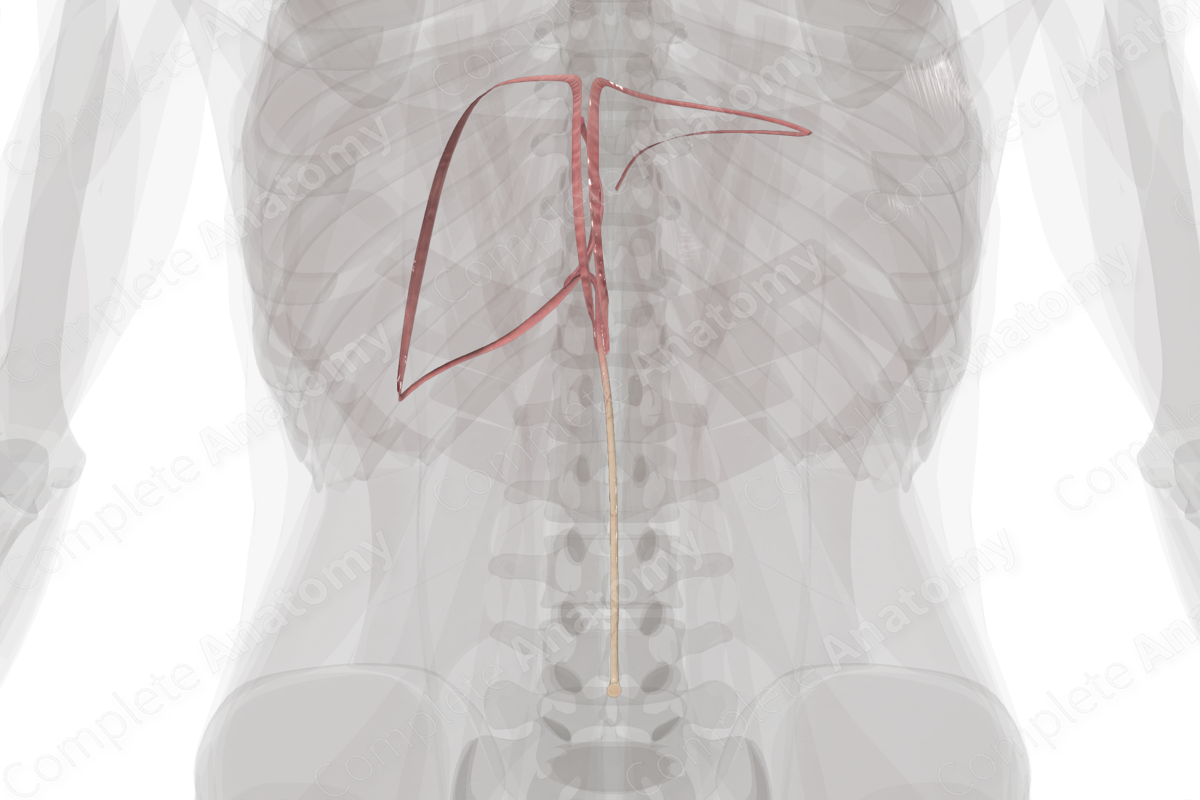
Key Features/Anatomical Relations
The liver has numerous peritoneal attachments due to its close proximity to foregut organs (stomach and duodenum) and the diaphragm, as well as its important role in fetal circulation (round ligament of the liver and ligamentum venosum).
Function
The peritoneal attachments to the liver provide the majority of anchoring support to hold the heaviest abdominal organ. The ligaments have various levels of stabilization for the liver, with the coronary and triangular ligaments providing the primary support, and the falciform ligament as a tertiary support (Standring, 2016). The remaining ligaments provide minimal stabilization support and principally serve as conduits for neurovasculature structures, either throughout life or during development.
List of Clinical Correlates
- Liver transplant
- Blunt abdominal trauma
References
Standring, S. (2016) Gray's Anatomy: The Anatomical Basis of Clinical Practice. Gray's Anatomy Series 41 edn.: Elsevier Limited.
Learn more about this topic from other Elsevier products
Liver anatomy and physiology: Video, Causes, & Meaning

Liver anatomy and physiology: Symptoms, Causes, Videos & Quizzes | Learn Fast for Better Retention!
Liver Structure

Microunits of liver structure are the smallest bits of parenchyma that are perfused by a terminal portal vein and/or that are drained by a terminal hepatic vein.




